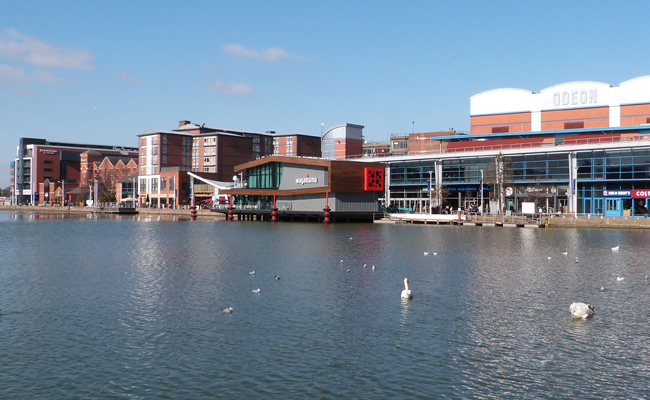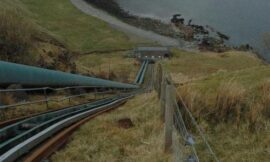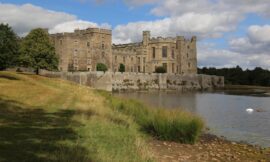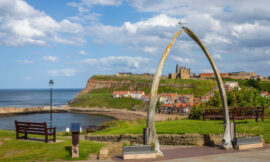Introduction
Brayford Pool, located in the heart of Lincoln, is a natural inland harbor with a history that dates back to Roman times. This significant body of water has played a central role in the city’s development, evolving from a bustling Roman port to an industrial hub and now a vibrant area for leisure and tourism. Brayford Pool is not just a picturesque spot; it is a symbol of Lincoln’s resilience and adaptability through the ages. This essay explores the history, significance, and contemporary role of Brayford Pool, highlighting its transformation and enduring legacy.
Historical Background
1. Roman Origins and Early Use
Brayford Pool’s origins can be traced back to the Roman period when Lincoln, then known as Lindum Colonia, was an important Roman settlement. The Romans recognized the strategic and economic importance of the River Witham, which flows into Brayford Pool, providing a crucial link to the sea and facilitating trade and military movements. The pool itself served as a natural harbor, allowing ships to dock and goods to be unloaded close to the city center.
During the Roman era, Brayford Pool was a hive of activity, with goods such as pottery, grain, and luxury items being transported via the river to and from the continent. This connectivity was essential for the economic prosperity of Lindum Colonia, establishing it as a key trading hub in Roman Britain. The port would have been lined with warehouses, workshops, and bustling marketplaces, reflecting the vibrant commercial life of the city.
2. Medieval Period and Decline
Following the decline of the Roman Empire, Brayford Pool continued to serve as a port, though its prominence waned during the early medieval period. As Lincoln transitioned through Saxon and Viking control, the focus of the city shifted, and Brayford Pool’s role diminished somewhat, although it remained a vital waterway for local trade and fishing.
In the medieval period, the Witham and Brayford Pool were part of a broader network of waterways that linked Lincoln to other parts of England, including the important trading town of Boston. However, the gradual silting of the river and neglect of the water infrastructure led to a decline in its navigability, reducing the pool’s effectiveness as a major port.
3. Industrial Revolution and Revival
The Industrial Revolution in the 18th and 19th centuries brought a renewed focus on Brayford Pool as a key industrial asset. Lincoln’s economy shifted towards manufacturing and engineering, particularly in the production of machinery and engines. The pool became an essential transport hub once more, facilitating the movement of raw materials such as coal and iron, as well as finished goods produced in Lincoln’s factories.
The construction of the Foss Dyke, a Roman canal linking the River Witham to the River Trent, was revived and improved during this period, further enhancing Brayford Pool’s connectivity. This canalization project was instrumental in supporting Lincoln’s industrial growth, allowing larger barges to transport goods between Lincoln and other major industrial centers.
The Brayford area itself became heavily industrialized, with warehouses, mills, and factories lining its banks. The waterway was busy with barges and ships transporting goods, contributing to Lincoln’s prosperity. However, as with many industrial centers, the environmental impact was significant, with pollution and overuse leading to a decline in the quality of the water and surrounding areas.
4. Decline and Regeneration in the 20th Century
By the mid-20th century, Brayford Pool’s industrial significance had declined due to changes in transport and industry, with rail and road overtaking waterways as the primary means of moving goods. The area around the pool fell into neglect, becoming a shadow of its former self, with many of the old industrial buildings falling into disrepair or being demolished.
However, the latter part of the 20th century saw a concerted effort to regenerate Brayford Pool and its surroundings. Recognizing its historical and aesthetic value, local authorities and community groups worked to transform the area from an industrial wasteland into a vibrant leisure and cultural hub. Key to this transformation was the establishment of the University of Lincoln, whose campus sits on the south bank of Brayford Pool, bringing new life, investment, and activity to the area.
Contemporary Brayford Pool
Today, Brayford Pool is a focal point of modern Lincoln, blending its rich history with contemporary development. It is a popular destination for both locals and tourists, offering a mix of leisure activities, dining, and cultural events. The regeneration of the Brayford Waterfront has turned the pool into a picturesque setting with marinas, restaurants, hotels, and the university campus, all contributing to a lively, welcoming atmosphere.
1. Leisure and Tourism
Brayford Pool has become one of Lincoln’s primary leisure and tourism hotspots. The waterfront is lined with restaurants, cafes, and bars, offering visitors a variety of dining experiences with views over the water. Boat trips and water taxis operate on the pool, allowing people to explore Lincoln from a unique perspective, while pleasure boats and kayaks add to the vibrant, active use of the water.
The area hosts various events throughout the year, including festivals, outdoor cinema screenings, and live music performances, all contributing to its dynamic cultural scene. The transformation of Brayford Pool from an industrial hub to a leisure destination highlights the adaptability of urban spaces and the importance of preserving historical sites while repurposing them for contemporary use.
2. University of Lincoln
The University of Lincoln, established in 1996, has played a pivotal role in the rejuvenation of Brayford Pool. The university’s main campus, located on the south bank, has brought thousands of students and staff into the area, significantly boosting the local economy and revitalizing the waterfront. The presence of the university has also fostered a youthful and innovative spirit in the area, with new businesses, creative industries, and research initiatives contributing to Lincoln’s growth.
The university’s modern architecture stands in contrast to the historic elements of the Brayford Pool, creating a blend of old and new that reflects the city’s evolution. The integration of educational facilities within this historic setting has been carefully managed to respect the pool’s heritage while promoting forward-looking development.
3. Environmental Initiatives
In recent years, there has been a growing focus on improving the environmental quality of Brayford Pool. Efforts have been made to clean up the water, manage pollution, and enhance the natural habitats around the pool. These initiatives include the introduction of reed beds and other aquatic plants to improve water quality and provide habitats for wildlife, as well as community-led clean-up events and educational programs.
These environmental efforts have not only improved the aesthetic appeal of Brayford Pool but have also fostered a greater appreciation for the natural environment within the urban setting. The pool is now home to various species of birds, fish, and other wildlife, contributing to the biodiversity of the area and providing opportunities for nature-based recreation and education.
4. Heritage and Interpretation
Brayford Pool’s rich history is celebrated through various interpretive efforts, including informational plaques, guided tours, and digital resources. These initiatives help to tell the story of the pool’s transformation from a Roman port to an industrial hub and finally to a modern leisure destination. By engaging visitors with its history, Brayford Pool serves as a living reminder of Lincoln’s long and varied past.
Efforts to preserve and interpret the Roman, medieval, and industrial heritage of the pool have helped to reinforce its significance as a key part of Lincoln’s identity. The juxtaposition of historic and contemporary elements around Brayford Pool provides a tangible link to the city’s past while celebrating its ongoing evolution.
Conclusion
Brayford Pool is a microcosm of Lincoln’s broader historical narrative, embodying the city’s adaptability and resilience across the centuries. From its beginnings as a Roman port to its industrial heyday and subsequent decline, Brayford Pool has continually evolved to meet the changing needs of the city and its inhabitants. Today, it stands as a vibrant symbol of Lincoln’s regeneration, offering a unique blend of history, leisure, and culture.
The transformation of Brayford Pool into a thriving waterfront destination illustrates the power of urban regeneration and the importance of preserving historical sites while adapting them for modern use. As a key part of Lincoln’s heritage, Brayford Pool continues to play a central role in the life of the city, connecting residents and visitors alike to its rich past and dynamic present. Through ongoing preservation, environmental initiatives, and community engagement, Brayford Pool is set to remain a cherished part of Lincoln’s landscape for generations to come.



